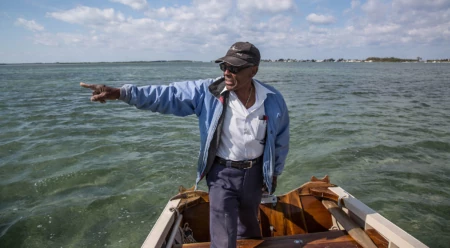Civil Rights and Bonefishing in Bimini
Fly fishing guide Ansil Saunders recalls his time in the boat with Dr. Martin Luther King Jr.
“It happened right there—just off that mangrove island,” Ansil Saunders points, recollecting the day in 1971 that his client, Jerry Lavenstein, a now-deceased sportsman from Virginia Beach, Virginia, caught a 16-pound bonefish on eight-pound test and a live shrimp. That fish was an all-tackle world record, one that still stands.
Saunders is a lanky man with chiseled forearms and a clear complexion that is anachronistic given he’s been poling a boat under the blazing sun for decades. He has lived on Bimini of the Bahamas for his entire life and retired from guiding last year at the age of 83. Saunders is a fifth-generation Biminian. He started fishing at 18 years old and within 15 years, in 1966, he had converted his religion to fly—which says a lot, as he is a devout man. Even today, he regularly attends church on the sleepy but rapidly developing island of North Bimini.
Saunders is a walking history book, having experienced not only that magical day, but also many harder ones during the United States’ Civil Rights Movement. Segregation was also alive and well on Bimini. A small chain of just two islands, Bimini holds a series of mangrove patches that thrive in the bight between the tiny north and south islands. It’s only 50 miles east of Miami, but is a world away in character.
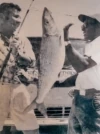
Saunders and Jerry Lavenstein with the all-tackle world record bonefish. This image (photographer unknown) hangs in the Bimini Big Game Club, where Hemingway holed up, but Saunders was not allowed entry. Years later, thanks to the work of Saunders, equality came to the club—and Bimini. Photo: Brian Irwin
The movement toward achieving racial equality in the United States had been brewing for years but took on inertia when, in 1954, the U.S. Supreme Court ruled in Brown v. Board of Education of Topeka, Kansas, finding that racial segregation in schools was unconstitutional. A year later, storied heroine Rosa Parks was arrested in Montgomery, Alabama, for refusing to relinquish her bus seat to a white passenger. Back in Bimini, Saunders was refused service at the island’s most renowned lodge, the Bimini Big Game Club. It was the start of something historical.
Over the ensuing decade, the push and pull over the soil of equality sprouted critically important historical figures, including Dr. Martin Luther King Jr. and Adam Clayton Powell Jr. Eventually the protests and struggles of these men and others degraded into tragic violence, which King had hoped to extinguish with the passage of the Civil Rights Act of 1964.
It seems every fly fishing guide on Bimini has tacked a “Bonefish” to their name, and Ansil “Bonefish Legend” Saunders is no different. He learned how to bonefish from his uncle, “Bonefish Sam,” seven decades ago. Within a short period, he realized that boats suitable for angling the flats were expensive and difficult to come by. Better to build than buy. And while he was at it, he decided to sell these vessels.
On the shore of North Bimini, the creamy-green water laps at a bucolic boathouse. It’s here that Saunders has lived for 40 years, building flats boats—34 in all—which he has been doing since he turned 15 years old. He harvests wind-whipped trees from the islands, mills the wood and makes a literal work of art with an eight-inch draft. Today, at 84, he’s given up on making boats, so he relies on his 2002 creation, Jewel to get around the flats. Even though he’s retired from guiding, he still fishes most days, patiently waiting for tails and quick flashes of silver in the broad bight that separates North and South Bimini.
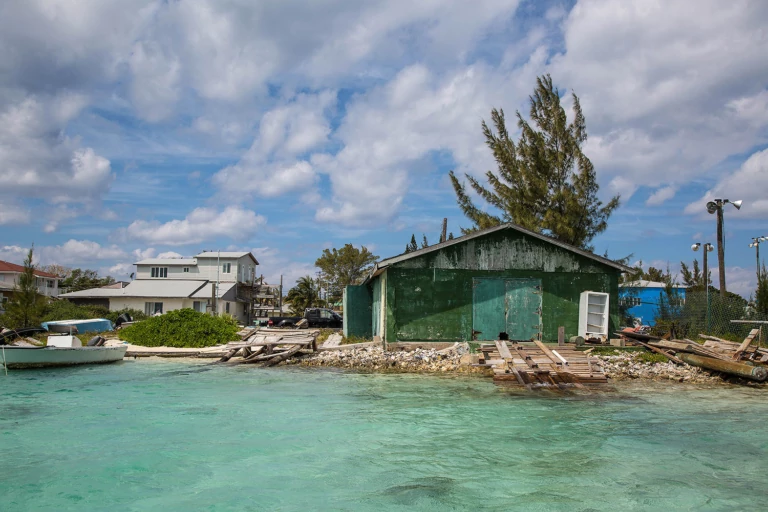
For more than 40 years Ansil Saunders constructed his flats skiffs in this waterside boathouse in Alice Town on North Bimini. Photo: Brian Irwin
It was through this estuary, amid miles of hard sand flats with scattering bones, that he toured us around. Jewel is a fitting name for this boat, as it was aboard her that Saunders recounted his two meetings with Queen Elizabeth. “I made her a necklace out of shells,” he says. “I used a dental drill to make the holes in the shells. It took two weeks.”
Saunders has met and guided many notable figures—including Richard Nixon and Joe Namath—and credits himself with the concept of the Super Bowl, an idea he claims to have hatched while guiding Pete Rozelle, NFL commissioner for 30 years. But his most notable client was Dr. Martin Luther King Jr.
In 1964, King came to Bimini to solicit help from the controversial self-exiled congressman from New York, Adam Clayton Powell Jr. Powell was a controversial but powerful character. He was a tenured member of Congress and chairman of the Education and Labor Committee, the most powerful position held by an African American in Congress at the time. During the early 1960s he would frequent Bimini, his favored getaway destination. His wanderlust had consequences, and later, in 1967, he was accused of corruption, misappropriation of committee funds and extensive recreational travel at the cost of the government. Eventually, in 1967, he was “excluded” by Congress from participation pending an investigation into his behavior. Powell sued for his seat back and, in 1968, was reelected to his post. He suffered final defeat in 1970, when he lost the election and retired to Bimini, where he’d finish out his days. In 1972 Powell died, his ashes scattered over the waters of Bimini by his son.
Back in 1964, Powell was still in power and his track record in Congress concerning civil rights issues was strong. Powell hadn’t yet failed to push a civil rights issue through Congress, making his vote critical to achieving King’s mission—to pass enforceable legislation eradicating segregation, via legislation like the Civil Rights Act of 1964. Powell’s constituents, including the heavily populated borough of Harlem—and King—needed his support. So King courted Powell on Bimini, hoping for a conjoined force against segregation. While staying at the Bimini Big Game Club, where Hemingway was known to decamp, King fished with Ansil Saunders. Deep in a mangrove creek aboard Saunders’ boat, he wrote his acceptance speech for the Nobel Peace Prize.
On December 10, 1964 King spoke in Oslo, Norway. “I accept the Nobel Prize for Peace at a moment when 22 million Negroes of the United States of America are engaged in a creative battle to end the long night of racial injustice. I accept this award on behalf of a civil rights movement which is moving with determination and a majestic scorn for risk and danger to establish a reign of freedom and a rule of justice.”
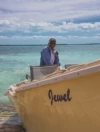
Saunders’ last creation, Jewel, is the only boat on his property and his finest work of art. It’s aboard her that he still fishes, almost every day, for bonefish. Photo: Brian Irwin
Dr. Martin Luther King Jr. wasn’t a tall man. Standing only 5’7”, he was powerful in his words, timely in his communication and persuasive to a degree the country had never seen.
According to Saunders, King didn’t wet a line, but rather “fished” with his eyes only, taking in the scenery while mentally and physically penning his speech. It took all day, with Saunders poling gently amid the flats and channels, pressing into the thick schools of bones as King wrote silently and swiftly. King asked Saunders to tie up the boat in the aforementioned creek, where he finished writing the words that would later inspire generations. “Sooner or later,” King wrote that day, “all the people of the world will have to discover a way to live together in peace, and thereby transform this pending cosmic elegy into a creative psalm of brotherhood. If this is to be achieved, man must evolve for all human conflict a method which rejects revenge, aggression and retaliation. The foundation of such a method is love.”
King finished his draft. He closed his notepad and looked at Saunders. “What say you?” King asked him. Ansil pulled from his pocket a psalm he’d written, one he now calls “the Creation Song.” He sang it to King. It went on for many minutes, after which there was silence. King stood up in the handmade boat. “Oh God, my God. I can reach out and touch the face of God. I can reach out and touch the face of God.”
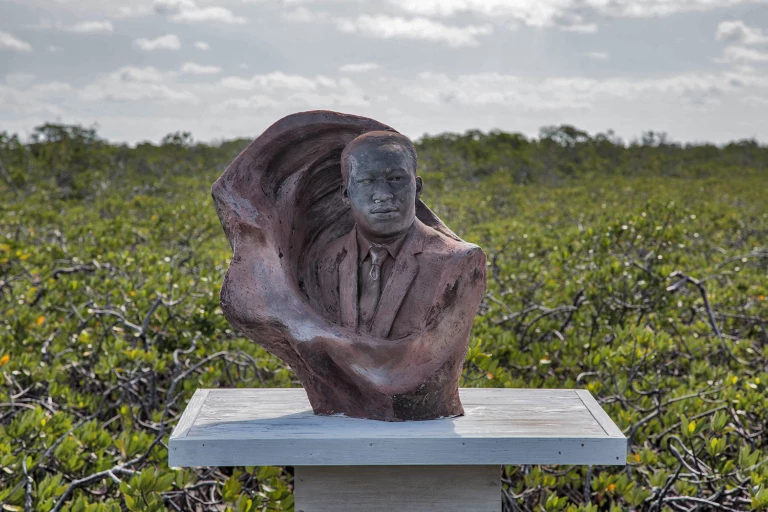
This memorial to Dr. Martin Luther King Jr. was funded by donors, but assembled by Saunders, without help. An unnamed artist donated the cast. Photo: Brian Irwin
On the day Saunders showed us where King penned the speech—what he now calls the hallowed ground—he stopped our boat aside a statue of King that sits on a pillar driven into the mud. “This is where he wrote. When we got here to Bonefish Creek, the snappers ran and the birds sang. King said, ‘Look at all this life. How can there be so much life and some don’t believe in God?’”
Saunders stood in his boat, my wife Lori and I his only audience for miles. Pointing his finger at the sky he sang, “Just look around you and see God in everything, his name written on every tiny raindrop.” We listened for a full 10 minutes and by the tune’s end, tears streamed down my wife’s face.
After he finished his psalm, Saunders went on. “King came back to Bimini in 1968. He came to be inspired. On my boat he wrote his speech in support of the sanitation workers’ strike. He had been receiving death threats. He knew he was going to die. So he closed his speech with his own eulogy.
“Like anybody,” King said in the speech, “I would like to live a long life—longevity has its place. But I’m not concerned about that now … I’ve seen the Promised Land. I may not get there with you. But I want you to know tonight that we, as a people, will get to the Promised Land.”
Saunders shed a tear. “The last thing he ever said to me was, ‘Keep the faith, Ansil. Keep the faith and spread it gently.’” Three days after leaving Bimini, on April 3, 1968, King delivered his “I’ve Been to the Mountaintop” speech. The next day he was shot dead.
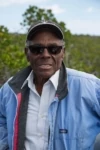
Ansil welcomed us into his dusty boat shop, eager to share his space and his story. Photo: Brian Irwin
Saunders is, to this day, a gentle soul—one who has seen the long march toward equality end in the legal eradication of segregation. Back home, he sat in the Bimini Big Game Club until they finally relented and served him lunch. When asked how many days he currently bonefishes, Saunders shot me a confused look. “Everyday, of course. Every day I go out.”
On my last day in Bimini’s estuary I fished with another guide, Bonefish Ebbie. As the sun set over the salty brine of the flats, a small wooden boat appeared on the horizon. In it a single elderly man stood, holding a fly rod, scanning for bones.
“Who’s that, Ebbie?” I asked.
“Ansil. He’s out there every day. In a way, it’s his island. He’s always out there. Keeping the faith.”
The story first appeared in The Flyfish Journal.
